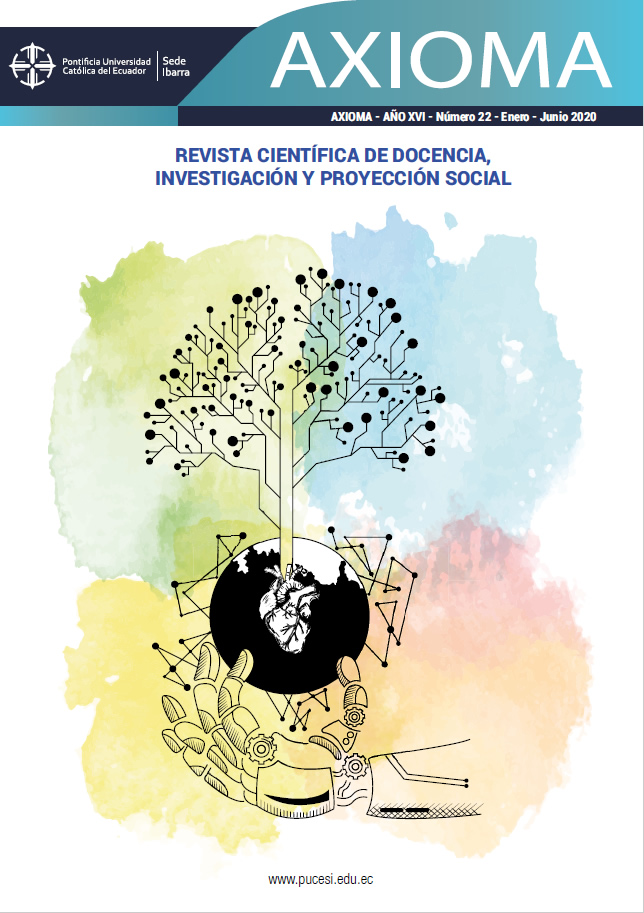Wool dyeing by exhaustion with nano clays and achiote extracts (bixa orellana)
Main Article Content
Abstract
Nanotechnology is used to generate new nanometric structures. The objective of this research was to develop the formation of a nanopigment using the carotenoid dyes from Achiote (Bixa Orellana) to optimize molecular compaction in 100% wool tissue. For the formation of the nanopigment, 10g of nanoclays were used: Trimethyl stearyl ammonium or Montmorillonite, K10, Halloysite and Bentonite hydrated separately in 2L of deionized water. The concentration was 0.005 g / L; then, with the achiote extracts previously separated with sodium and potassium hydroxide, a solution of 10g of solid pigment and 10g of liquid dye was made separately in 1L of demineralized water: the concentration was 0.01 g / L. The mixing for the cationic exchange between the nanoclay and the pigment is carried out at a ratio of ¼, that is, 100 ml of nanoclay in 400 ml of solid pigment. The same was done with the liquid dye; With the nanopigment formed, 17 wool tissue samples were dyed. The method used is the experimental one; the analysis used color measurement with a spectrophotometer; fastness to washing, loading and unloading to rubbing is assessed; the ultraviolet protection factor UPF of the tissue is evaluated. The Cie94 Delta-E color fastness shows significant color changes. Regarding washing and rubbing, they show differences mostly on a 5/4 scale (excellent / very good) and minimal (between medium / low) 3/2; In addition, the results of the UV-Visible Spectrophotometry measurements of the UVA sun protection factor were low in wool, therefore it was concluded that it has greater protection from ultraviolet rays: this could represent less damage to the skin.
Downloads
Article Details
Con la finalidad de contar con un tipo de licencia más abierta en el espectro que ofrece Creative Commons, a partir de diciembre de 2022 desde el número 27, AXIOMA asume la Licencia Creative Commons 4.0 de Reconocimiento-NoComercial-CompartirIgual 4.0(CC BY-NC-SA 4.0). Tanto el sitio web como los artículos en sus diferentes formatos, reflejan esta información.
![]()
Hasta el mes de noviembre de 2022 con el número 26, la revista AXIOMA asumió una Licencia Creative Commons Atribución-NoComercial-SinDerivadas 4.0 Internacional (CC BY-NC-ND 4.0). Los artículos contenidos en cada número hasta el 26, cuentan con esta licencia y su descripción se conserva en el portal de nuestra revista.
Atribución-NoComercial-SinDerivadas
CC BY-NC-ND
AXIOMA- Revista Científica de Investigación, Docencia y Proyección Social
References
Baena, Micó, & Martínez. (2013). Patent No. WO 2013110841 A1. Retrieved from https://patentimages.storage.googleapis.com/42/04/3e/53156911aebc5f/ES2421303A1.pdf
Carvajal, E. (2020). Archivo de Tablas, Fotografías, Gráficos, Ilustraciones, Ecuaciones, Tesis Doctoral UPV.
CIE. (2004). CIE15 Technical Report Colorimetry. In COMMISSION INTERNATIONALE DE LECLAIRAGE , Colorimetry, 3rd Edition (Vol. 552). https://doi.org/ISBN3901906339
Devia, J., & Saldarriaga, L. (2003). Planta piloto para obtener colorante de la semilla de achiote (Bixa orellana). Revista Universidad EAFIT, 39(131), 8–22.
Diccionario Gráfico. (n.d.). Delta E, ΔE | Glosario gráfico. Retrieved March 4, 2020, from http://adaptivethemes.com/ website: http://www.glosariografico.com/delta_e
Hernández, J., Flores, S., Romero, F., & Palma, A. (2017). Modelación del comportamiento mecánico del nanocompuesto de Poliestireno-Montmorillonita, mediante la técnica de nanoindentación (Centro de Investigación en Materiales Avanzados CIMAV). Retrieved from https://cimav.repositorioinstitucional.mx/jspui/handle/1004/750
Lindbloom, B. J. (2012). Color Difference Calculator. Retrieved March 4, 2020, from Bruce Lindbloom.com website: http://brucelindbloom.com/index.html?Eqn_DeltaE_CIE94.html
Micó-Vicent, B. (2015). Optimización de la síntesis de nanopigmentos de origen natural para biopolímeros mediante el uso del diseño de experimentos. Universidad Politécnica de Valencia.
Micó-Vicent, B., Martínez-Verdú, F., & Gilabert-Pérez, E. (2010). Estudio preliminar sobre la incorporación y/o síntesis de nanopigmentos para la tintura en CO2 supercrítico. In IX CONGRESO NACIONAL DEL COLOR ALICANTE 2010 (p. 425). Retrieved from http://rua.ua.es/dspace/handle/10045/16497#vpreview
Micó-Vicent, Jordán, J., Martínez-Verdú, F., & Balart, R. (2017). A combination of three surface modifiers for the optimal generation and application of natural hybrid nanopigments in a biodegradable resin. Springer, 52, 889–898. https://doi.org/10.1007/s10853-016-0384-8
Montava-Seguí, I., Carvajal, E., & Bou-Belda, E. (2019). Tintura de tejido de algodón con colorante de achiote en nanoarcillas de montmorillonita K10. In S. L. Compobell (Ed.), VII Congreso I+D+i Campus de Alcoi. Creando sinergias (pp. 191–194). Valencia.
Nuevadermatología. (2018). Protección Solar. Retrieved June 16, 2019, from http://www.nuevadermatologia.com.ar/proteccionsolar.html
Sinha Ray, S., & Okamoto, M. (2003). Polymer/layered silicate nanocomposites: A review from preparation to processing. Progress in Polymer Science (Oxford), 28(11), 1539–1641. https://doi.org/10.1016/j.progpolymsci.2003.08.002

